Communication ways:
call us: +98 912 098 5010
Visit us:
No.2, First 8 meter alley, Nobovvat sq., Tehran, Iran
Mail us: [email protected]
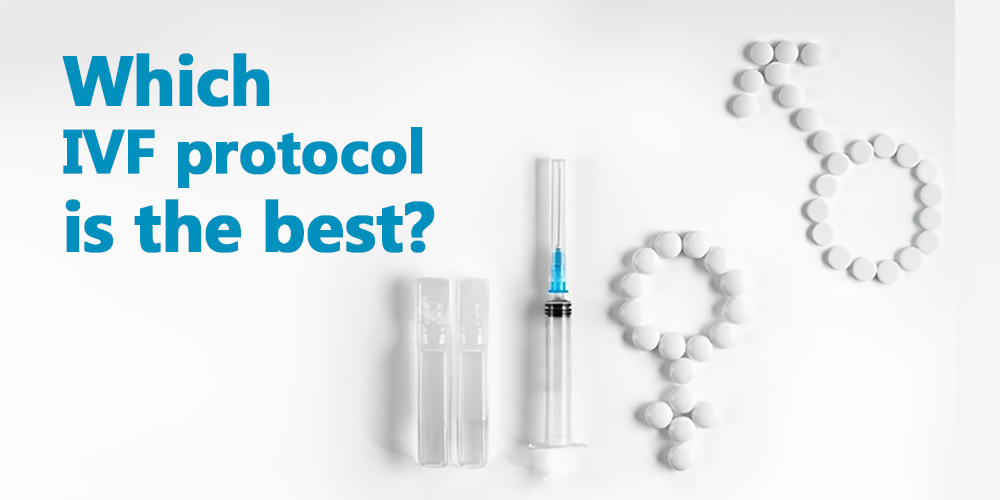
In order to undergo the IVF process, there are several IVF protocols that can be used to stimulate the ovaries by the use of certain medications and prepare them for in vitro fertilization (IVF). This process is done in order to reach an optimal number of eggs to be fertilized and make healthy embryos so that at least one pregnancy occurs.
There are different types of IVF protocols and each of them can be suitable for certain patients. For choosing the best IVF protocol, you need to consult with your fertility doctor to review your medical records (woman’s age, response to the medication and the outcome of previous attempts) and decide which protocol is right for you.

Quick Information | |
|---|---|
cost | 2400$ |
Anesthesia | Local |
Duration of procedure | 3-4 weeks |
Hospital Stay | Zero day |
Minimum Stay in Iran | 3 to 4 weeks |
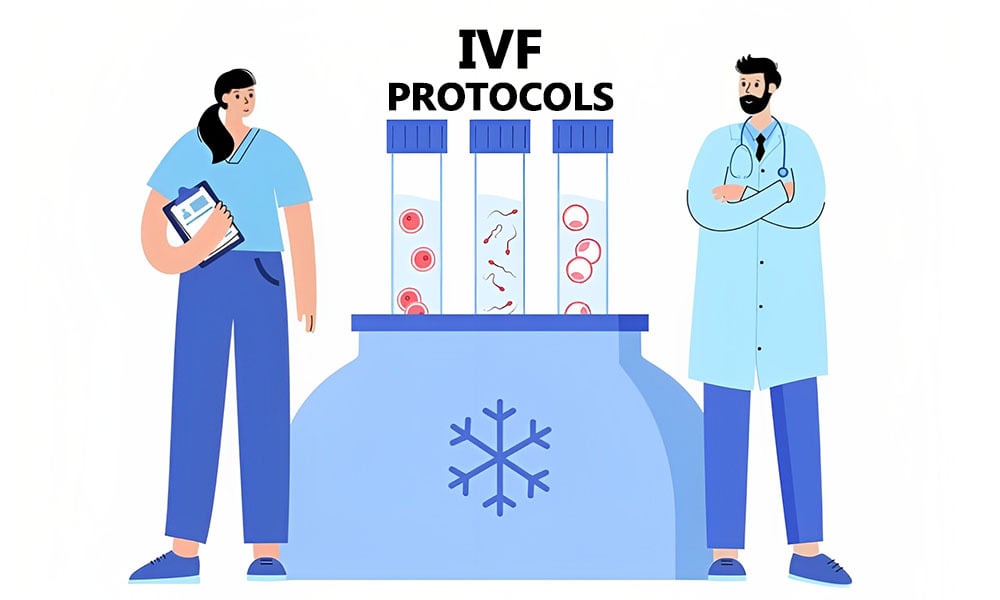
This is the most commonly used protocols for IVF. It is effective for most of the patients and contains the lowest number of injections. In this protocol, you will be informed to use birth control pills before starting the IVF cycle. For 10 days you will be taking follicle-stimulating hormone (FSH) and will have luteinizing hormone (LH) injections.
Around the day 5, the Gonadotropin-Releasing Hormone (GNRH) antagonist is used in order to prevent premature ovulation. Your doctor may use “Lupron trigger” or “dual trigger” medicines to stimulate the maturation of the eggs before retrieval process begins. In this way the risk of Ovarian Hyper-Stimulation Syndrome (OHSS) decreases significantly.
This protocol is mostly used in the younger patients or those who had poor-quality embryos in their previous protocols. You will be prescribed to take birth control pills before starting the cycle of IVF. On the third week your doctor will order an injectable medication called Lupron. By undertaking Lupron injections, your pituitary gland temporarily stops secretion of FSH and LH hormones. Injections can control the cycle and prevent premature ovulation of the follicles.
The micro-dose Lupron is prescribed for those patients who had a poor response to their previous protocols due to their high reproductive age or low ovarian reserve. The flare protocol is used to make the ovaries quickly respond to the stimulation and produce enough mature eggs to be used in the IVF process. The lower dose of Lupron stimulates the body’s natural FSH production instead of suppressing it. Taking micro-dose Lupron for stimulation phase continues until the injection of the Human Chorionic Gonadotropin (HCG) trigger. This protocol usually makes the IVF process work by enhancing the response speed of the ovaries.
Women who respond poorly to the short protocols and have low ovarian reserve may enhance their ovaries response by using this protocol. Estrogen Priming Protocol synchronize more follicles for retrieval. For this aim, your fertility doctor may suggest you to undergo an estrogen medication and probably a few days of GNRH antagonist before you start the IVF cycle.
Some experts believe that minimal stimulation may offer some benefits instead of using traditional treatment. The related doctor may prescribe fertility pills or medications in very low dosage in order to retrieve just one or two eggs each time. The disadvantage of using this protocol is that it produces just a few healthy eggs and it needs undergoing more egg retrievals for achieving the goal of getting pregnant.
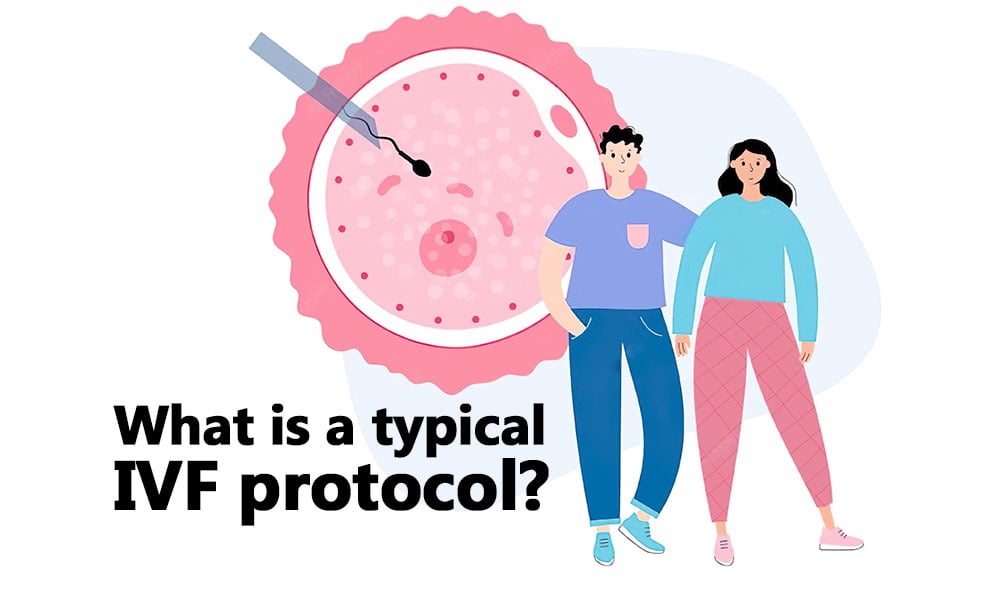 The most typical IVF protocol is the Antagonist or Short Protocol. This method involves the fewest number of injections and it is a mostly effective protocol for all patients. In this protocol, you may be recommended to use birth control tablets before starting an IVF cycle. You need to use follicle-stimulating hormone (FSH) and luteinizing hormone (LH) injections for 10 days. From around the fifth day, you should add Gonadotropin-Releasing Hormone (GnRH) antagonist in order to prevent premature ovulation. Before egg retrieval, your doctor may prescribe a “Lupron trigger” or “dual trigger” to stimulate the final maturation of the oocytes and get them ready to be harvested. It also decreases the risk of Ovarian Hyperstimulation Syndrome (OHSS). This protocol is usually used in younger patients or those who have not seen a good response from the other IVF protocols. By the third week, your doctor will prescribe you an injectable medication called Lupron. This medication temporarily stops the pituitary gland in the brain from releasing FSH and LH. By this method, the FSH and LH level from the injectable will control your cycle and prevent premature ovulation of the follicles.
The most typical IVF protocol is the Antagonist or Short Protocol. This method involves the fewest number of injections and it is a mostly effective protocol for all patients. In this protocol, you may be recommended to use birth control tablets before starting an IVF cycle. You need to use follicle-stimulating hormone (FSH) and luteinizing hormone (LH) injections for 10 days. From around the fifth day, you should add Gonadotropin-Releasing Hormone (GnRH) antagonist in order to prevent premature ovulation. Before egg retrieval, your doctor may prescribe a “Lupron trigger” or “dual trigger” to stimulate the final maturation of the oocytes and get them ready to be harvested. It also decreases the risk of Ovarian Hyperstimulation Syndrome (OHSS). This protocol is usually used in younger patients or those who have not seen a good response from the other IVF protocols. By the third week, your doctor will prescribe you an injectable medication called Lupron. This medication temporarily stops the pituitary gland in the brain from releasing FSH and LH. By this method, the FSH and LH level from the injectable will control your cycle and prevent premature ovulation of the follicles.It is fair to say that the best IVF protocol is neither maximal nor minimal, instead of them, it should be optimal based on the patient’s age, medical history, basal follicle count, Anti-Mullerian Hormone (AMH) levels, and family building aims. Before starting the IVF cycle, you have to consult with your fertility doctor to find out which protocol best fit your condition. In TebMedTourism company, by introducing you to our professional team, we pave the way of your fertility treatment. For getting more information, contact us now and consult with our experts free of charge.
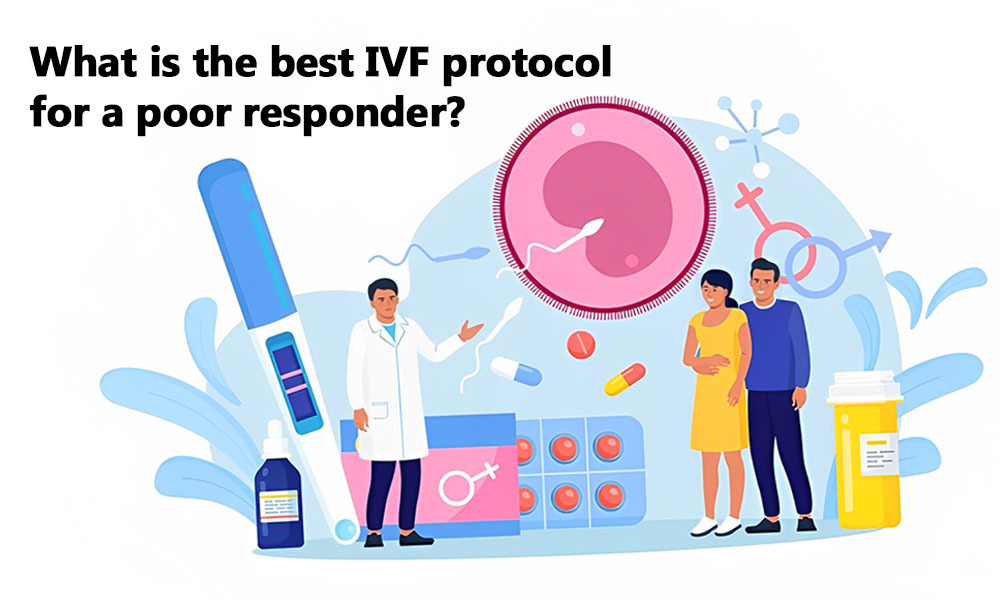 To maximize the IVF success rate, it is preferred to get multiple high-quality eggs. However, some women are poor responders to ovarian-stimulating drugs. After taking stimulating medications, they might mature a low number of follicles that lower the chance of IVF success. Therefore, women with the low ovarian response should be treated with a special IVF protocol that helps them mature more follicles. In long IVF protocol, some women are “over-suppressed” or are poor responders due to some other reasons. A “stop Lupron” protocol is one of the options to get a better ovarian response when using stimulating medications. In this protocol, Lupron will be used at the lower dose of 5 units daily instead of using 10 or 20 units, and then it is completely stopped after the woman gets her period. “Flare protocol” is another IVF protocol that is started on the second day of the cycle and tries to take advantage of an initial “flare-up” response of FSH and LH which are released from the woman’s pituitary gland. In this protocol, birth control pills are usually used for one month before the flare in order to not have any leftover cysts because they can be reactivated by the high LH level. Continuing Lupron for more than 3 days, suppresses the pituitary gland so that it has a low output of FSH and LH. The aim of this protocol is that Lupron causes the release of a large amount of FSH and LH that will suddenly start (flare-up) the follicles and as a result, we might have better ovarian stimulation with more mature follicles for IVF.
To maximize the IVF success rate, it is preferred to get multiple high-quality eggs. However, some women are poor responders to ovarian-stimulating drugs. After taking stimulating medications, they might mature a low number of follicles that lower the chance of IVF success. Therefore, women with the low ovarian response should be treated with a special IVF protocol that helps them mature more follicles. In long IVF protocol, some women are “over-suppressed” or are poor responders due to some other reasons. A “stop Lupron” protocol is one of the options to get a better ovarian response when using stimulating medications. In this protocol, Lupron will be used at the lower dose of 5 units daily instead of using 10 or 20 units, and then it is completely stopped after the woman gets her period. “Flare protocol” is another IVF protocol that is started on the second day of the cycle and tries to take advantage of an initial “flare-up” response of FSH and LH which are released from the woman’s pituitary gland. In this protocol, birth control pills are usually used for one month before the flare in order to not have any leftover cysts because they can be reactivated by the high LH level. Continuing Lupron for more than 3 days, suppresses the pituitary gland so that it has a low output of FSH and LH. The aim of this protocol is that Lupron causes the release of a large amount of FSH and LH that will suddenly start (flare-up) the follicles and as a result, we might have better ovarian stimulation with more mature follicles for IVF.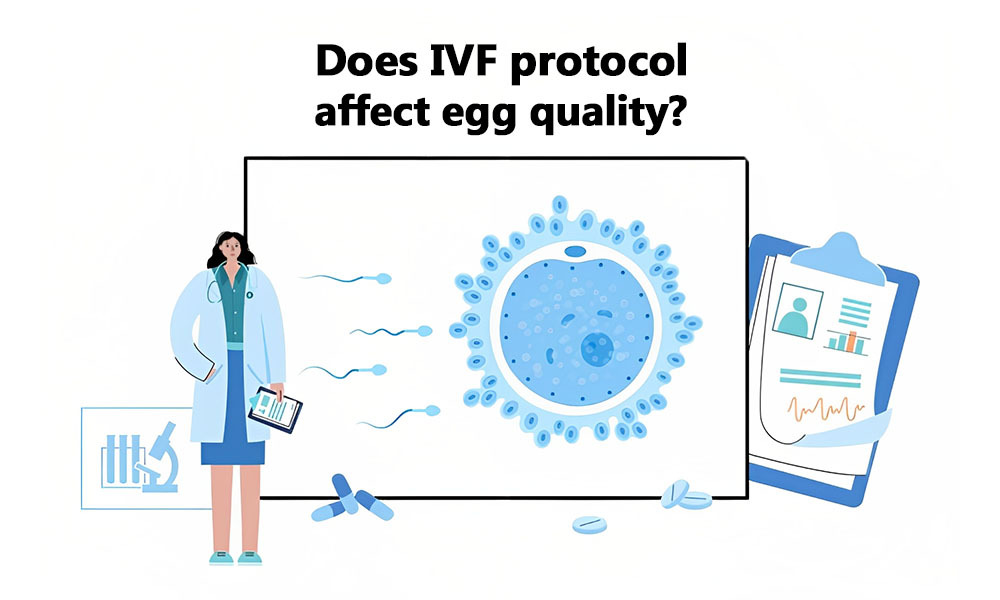 IVF protocol usually does not have a major effect on egg quality, however, a bad choice of the protocol can lead to diminished egg quality or further health complications. An unsuccessful IVF outcome can sometimes be related to the wrong type of IVF protocol. Stimulation protocol helps increase fertility in women, especially when they are in advanced ages. Low egg quality can lead to genetic defects in the embryo which results in a higher chance of IVF failure or miscarriage. When the eggs are stimulated, ovaries are supposed to produce more than one cycle per cycle. Then the embryos are created and if there is more than one healthy embryo, they can be frozen for future use. However, in case no healthy embryo is found, there is a need for another IVF cycle. The type of protocol and medication adjustment should be decided based on each patient’s ovarian reserve.
IVF protocol usually does not have a major effect on egg quality, however, a bad choice of the protocol can lead to diminished egg quality or further health complications. An unsuccessful IVF outcome can sometimes be related to the wrong type of IVF protocol. Stimulation protocol helps increase fertility in women, especially when they are in advanced ages. Low egg quality can lead to genetic defects in the embryo which results in a higher chance of IVF failure or miscarriage. When the eggs are stimulated, ovaries are supposed to produce more than one cycle per cycle. Then the embryos are created and if there is more than one healthy embryo, they can be frozen for future use. However, in case no healthy embryo is found, there is a need for another IVF cycle. The type of protocol and medication adjustment should be decided based on each patient’s ovarian reserve.

Communication ways:
call us: +98 912 098 5010
Visit us:
No.2, First 8 meter alley, Nobovvat sq., Tehran, Iran
Mail us: [email protected]

Comments & Questions